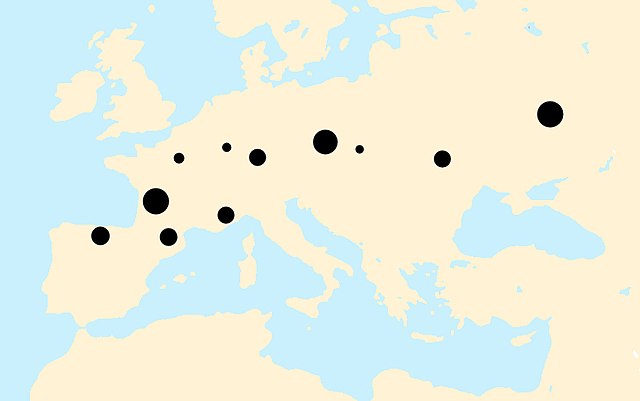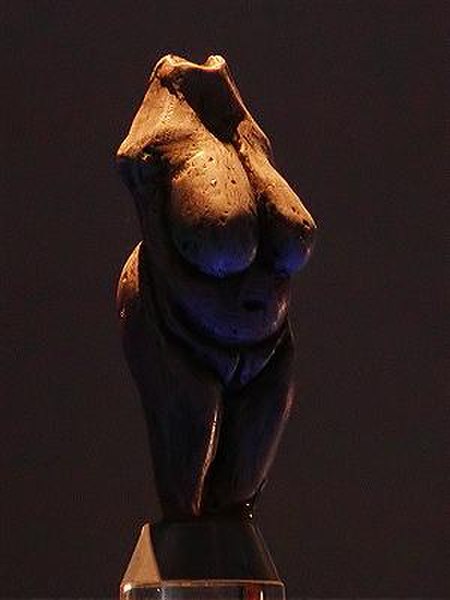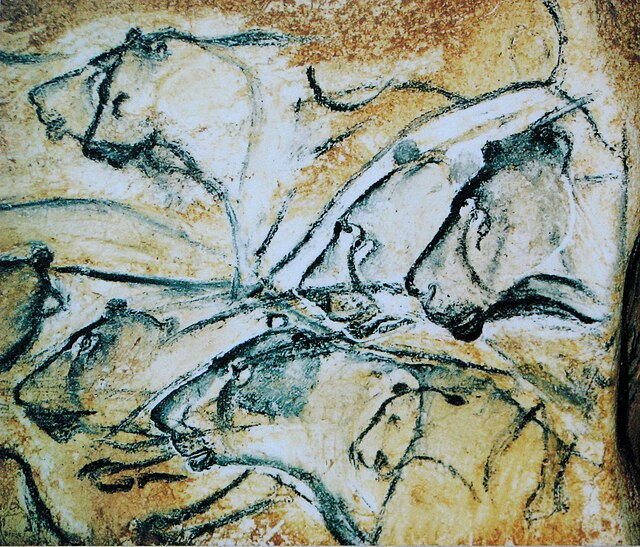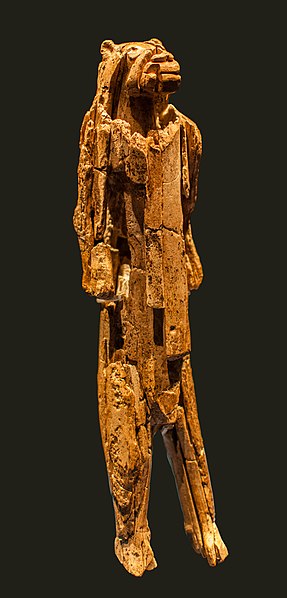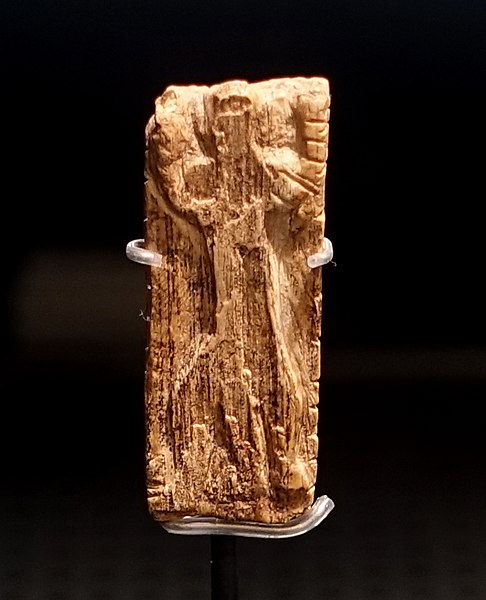The Gravettian was an archaeological industry of the European Upper Paleolithic that succeeded the Aurignacian circa 33,000 years BP. It is archaeologically the last European culture many consider unified, and had mostly disappeared by c. 22,000 BP, close to the Last Glacial Maximum, although some elements lasted until c. 17,000 BP. In Spain and France, it was succeeded by the Solutrean, and developed into or continued as the Epigravettian in Italy, the Balkans, Ukraine and Russia.
Image: Female face, ivory carving, Dolní Věstonice, Gravettian, 28 000 22 000 BP
Image: Venus of Willendorf frontview retouched 2
Image: Main Gravettian sites
The Venus of Moravany, made of mammoth tusk ivory
The Aurignacian is an archaeological industry of the Upper Paleolithic associated with Early European modern humans (EEMH) lasting from 43,000 to 26,000 years ago. The Upper Paleolithic developed in Europe some time after the Levant, where the Emiran period and the Ahmarian period form the first periods of the Upper Paleolithic, corresponding to the first stages of the expansion of Homo sapiens out of Africa. They then migrated to Europe and created the first European culture of modern humans, the Aurignacian.
Aurignacian
The expansion of early modern humans from the Levant where the Levantine Aurignacian stage has been identified.
The Lion-man of Hohlenstein-Stadel, Germany, 40,000 BP
The Adorant of Geissenklösterle, Germany



